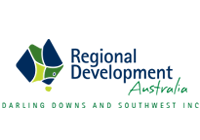Western Downs Regional Council area
About the profile areas
The 2023 Estimated Resident Population for Western Downs Regional Council area is 34,991, with a population density of 0.92 persons per square km.
Location and boundaries
The Western Downs Regional Council area is located in south-west Queensland, about 300 kilometres north-west of the Brisbane CBD. The Western Downs Regional Council area is bounded by Banana Shire in the north, the South Burnett Regional Council area in the north-east, the Toowoomba Regional Council area in the south-east, Balonne Shire and the Goondiwindi Regional Council area in the south-west, and the Maranoa Regional Council area in the west.
Traditional Owners
The original inhabitants of the Western Downs area were the Bigambul and Kambuwal Aboriginal people.
Name origin
The Western Downs Regional Council is named for its location; the western part of the Darling Downs. It was originally known as Dalby Regional Council.
Important
|
Population34,991 2023 ABS ERP |
Land area38,005 square km |
Population density0.92 persons per square km |
Settlement history
European settlement dates from the 1840s, with land used mainly for sheep and cattle grazing, grain growing and timber getting. Growth took place during the late 1800s and into the early 1900s when several small townships were established, aided by the opening of railway lines. Coal mining began in 1914 at Warra, but only lasted for five years. Population growth took place in the post-war years, particularly in the townships of Chinchilla, Dalby, Jandowae, Miles, Tara and Wandoan. The Moonie oil field began production in 1961. The population of the Council area increased from the mid 1990s, rising from about 22,300 in 1996 to about 33,000 in 2011. This growth was aided by the opening of the Kogan Creek Mine and the Kogan Creek Power Station from 2006. Population growth is expected to continue, particularly from gas and oil explorations and operations in the Surat Basin.
Land use
The Western Downs Regional Council area is predominantly rural, with numerous small townships and villages. The largest township is Dalby, with smaller townships at Bell, Chinchilla, Jandowae, Miles, Tara and Wandoan, and several villages. The Council area encompasses a total land area of about 38,000 square kilometres. Rural land is used largely for agriculture, particularly grain and cotton growing, with some sheep and cattle grazing and broadacre farming. Forestry and mining are also important industries, with the area being home to oil fields, coal mines, a power station and gas exploration.
Transport
The Western Downs Regional Council area is served by the Leichhardt Highway, the Moonie Highway, the Warrego Highway and the Westlander train.
Major features
- Major features of the Council area include Bunya Mountains National Park,
- Erringibba National Park,
- Southwood National Park,
- Lake Broadwater Conservation Park,
- Dalby Shoppingworld,
- Chinchilla Central Shopping Centre,
- Chinchilla Hospital,
- Dalby Hospital,
- Jandowae Hospital,
- Miles Hospital,
- Tara Hospital,
- TAFE Queensland South West (Dalby and Chinchilla Campuses),
- Dalby Regional Saleyards,
- Chinchilla Golf Club,
- Dalby Golf Club,
- Miles Golf Club,
- Tara Golf Club,
- Wandoan Golf Club,
- Bunya Park Racecourse,
- Miles Racecourse,
- Tara Racecourse,
- Chinchilla Showgrounds,
- Dalby Showgrounds,
- Miles Showgrounds,
- Wandoan Showgrounds,
- Chinchilla Cultural Centre,
- Chinchilla White Gums Art Gallery,
- Gallery 107@Dalby,
- John Mullins Memorial Art Gallery,
- Chinchilla Historical Museum,
- Dalby Pioneer Park Museum,
- Meandarra ANZAC Memorial Museum,
- Miles Historical Village Museum,
- Tara and District Historical Museum,
- The Condamine River,
- Chinaman’s Lagoon,
- Chinchilla Weir,
- Myall Park Botanic Garden,
- Waterloo Plain Environmental Park,
- Kogan Creek Mine,
- Kogan Creek Power Station and numerous state forests.
Included areas
- The Western Downs Regional Council area includes the localities of Auburn,
- Baking Board,
- Barakula,
- Barramornie,
- Beelbee,
- Bell,
- Blackswamp,
- Blaxland,
- Bogandilla,
- Boonarga,
- Brigalow,
- Bundi,
- Bungaban,
- Bunya Mountains (part),
- Burncluith,
- Burra Burri,
- Cadarga,
- Cameby,
- Canaga,
- Chances Plain,
- Chinchilla,
- Clifford,
- Columboola,
- Condamine,
- Coomrith,
- Cooranga,
- Crossroads,
- Dalby,
- Dalwogan,
- Darr Creek,
- Diamondy,
- Drillham,
- Drillham South,
- Ducklo,
- Dulacca,
- Durah,
- Eurombah (part),
- Fairyland,
- Flinton (part),
- Glenaubyn,
- Glenmorgan (part),
- Goombi,
- Goranba,
- Greenswamp,
- Grosmont,
- Gulagaba,
- Gurulmundi,
- Halliford,
- Hannaford,
- Hookswood,
- Hopeland,
- Inglestone,
- Irvingdale (part),
- Jandowae,
- Jimbour East,
- Jimbour West,
- Jinghi,
- Kaimkillenbun,
- Kogan,
- Kowguran,
- Kragra,
- Kumbarilla,
- Langlands,
- Macalister,
- Marmadua,
- Meandarra,
- Miles,
- Montrose,
- Moola,
- Moonie (part),
- Moraby,
- Mowbullan,
- Myall Park,
- Nandi,
- Nangram,
- Pelham,
- Pelican,
- Pine Hills,
- Pirrinuan,
- Ranges Bridge,
- Red Hill,
- Roche Creek,
- Rywung,
- Southwood,
- Springvale,
- St Ruth (part),
- Sujeewong,
- Tara,
- The Gums,
- Tuckerang,
- Waikola,
- Wandoan,
- Warra,
- Weir River,
- Weranga,
- Westmar,
- Wieambilla,
- Woleebee,
- Wychie and Yulabilla.
